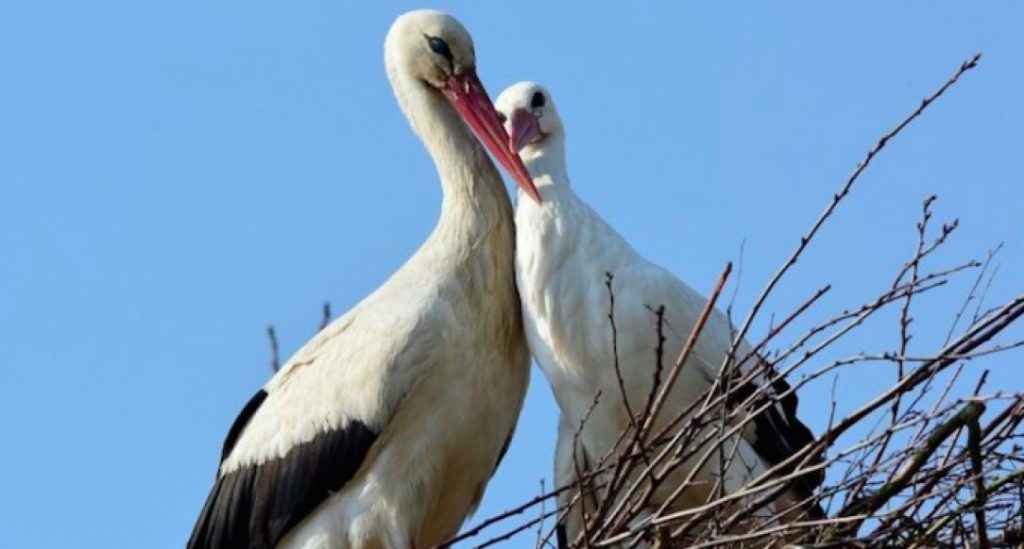Long Distance Love Birds
Brodski Varoš is a tiny village in Croatia, just a few miles north of the border between Bosnia and Herzegovina. It’s home to only about 2,000 people and, more importantly for our purposes, one bird.
That bird is named Malena, and she’s a stork. As a migratory bird, Malena shouldn’t be living in Croatia year-round, but since 1993, she has. That year, a hunter broke her wing, effectively grounding her for life. Her fate likely would have been worse but for the hero of our story, a former janitor named Stjepan Vokić. Vokić, having discovered Malena during a fishing trip, decided to become her caretaker; he brought her back to his home in Brodski Varoš, setting her up with a nest on his roof, feeding her, etc. (And gave her the name Malena, too.) It was a very nice act by someone who could have simply done nothing.
The story would have ended there but in 2001, something unexpected happened: another stork arrived. A male stork. The two mated and shortly afterward, the male stork left, as one would expect, being a migratory bird and all. But storks are also known for being serial monogamists; while they don’t mate for life, they tend to stick with the same partner so long as that partner is on the same migratory path. In this case, though, Malena had no migratory path, and the bird that happened across her nest seemed unlikely to return.
Until he did, a year later. And a year after that. And a year after that, too. Here’s a picture of them together, via Total Croatia News (TCN), and they appear to be in love. (Okay, “appear” is doing a lot of work there. But what a great picture!)

The male bird, since named Klepetan by Vokić, has made a habit of visiting Malena since. And as TCN reported in the story linked-to above, the trip is like clockwork. Vokić, before Klepetan arrives, “prepares a bucket of fish to greet Klepetan upon his return so he can recover from the long journey and take his place in the nest next to Malena.” The male suitor spends at least two months with his mate, rearing their children until they can fly. Because of the pair’s local fame, Klepetan has been outfitted with a tracker, and he makes quite the commute to see his not-quite-a-wife — the other ten months a year, Klepetan makes his home in South Africa, roughly 8,000 miles away.
There have been some weird glitches in the relationship, though. In 2017, per the pair’s Wikipedia entry (the primary source cited is offline and not in English, so apologies for not going right to the source, “Klepetan returned to find another bird and a newly laid egg in Malena’s nest.” But Klepetan made it clear that this was his home-away-from-home: he “drove the male away and smashed his competitor’s egg.” And in 2019, Klepetan came back to Malena early and left just a few weeks later. To make matters more troubling, per another TCN report, was ” looking old, tired, and very unwell” That August, Vokić told local press that the story had come to an end — Klepetan had died.
But love knows no such boundaries. (Or, more likely, Vokić was simply wrong.) In April of 2020, Klepetan returned again. And the pair added to their family — at least 66 storks born to the two, and counting.
Bonus fact: Perhaps the most famous stork is the Vlasic pickles mascot. (This guy.) That seems like an odd match — storks don’t eat pickles. The history? Storks, traditionally, are said to bring babies to expectant parents. But in the late 1960s and into the 1970s, the U.S. birth rate was down off historical norms. An ad exec came up with the idea that the stork, therefore, was low on work. As seen in this Vlasic ad from 1975, the stork explains that pickles are a decent alternative — he says that “with the birth rate down [. . . ], I deliver Vlasic pickles now.” And that kind of, sort of, makes sense — as Mental Floss notes, Vlasic took “the classic stork mythology and [combined] it with the belief that pregnant women crave pickles” to create an iconic, but odd, mascot.
From the Archives: Let’s Fly in Our Sleep: How some birds making very, very long trips.
